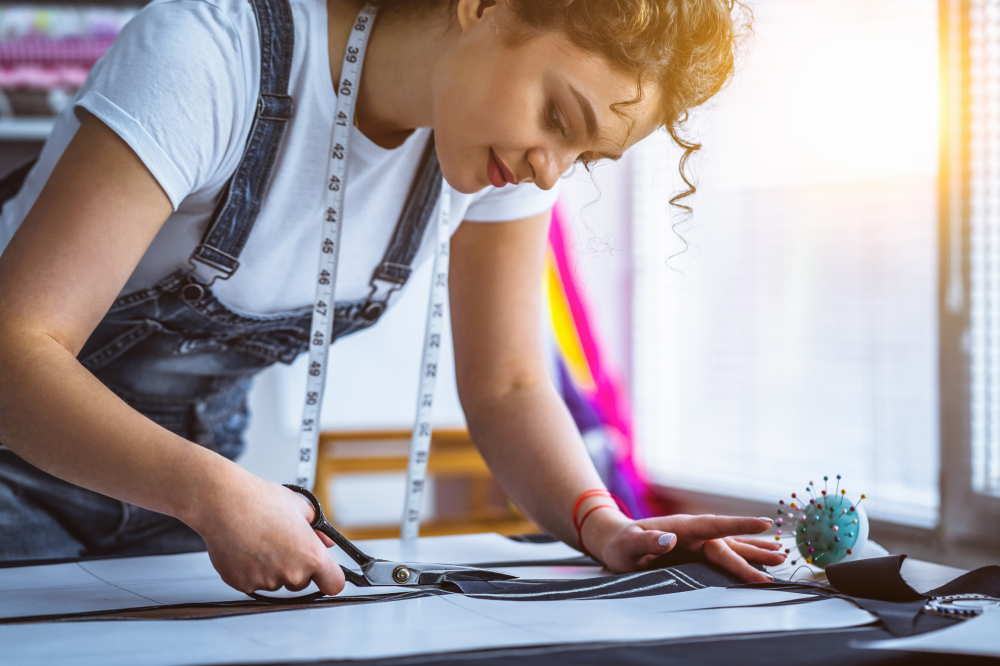Few things are more satisfying than making your own clothes.

Beginner tips for making your own clothes
Not only do you get a sense of achievement from transforming sheets of material into a new dress or top, but you feel good knowing you've done your bit for the environment, and probably saved a bit of money on the way.
Sadly, few of us have any idea where to begin when it comes to dressmaking and lots of us wish we'd taken sewing lessons when we were younger. However, it's never too late to start, and now is the perfect time to learn a new skill.
If you wanted to give your wardrobe a bit of a lift with minimal cost and environmental impact, dressmaking is the way to go. Sheona McMahon is the owner of independent fabric and sewing studio Sewisfaction, and these are her top tips for sewing newbies…
What you'll need

"Don't worry about expensive, over-the-top kit," McMahon says. "You don't need a pricey digital machine or a load of tools to get started." However, if you are serious about getting into dressmaking, you will need a sewing machine – but a simple one that has a straight stitch, zig zag stitch and ideally a button hole option is all you need, she says. "Why not dig out that old one from the loft or borrow one from a neighbour?"
Another thing which will really come in handy is a sharp pair of scissors. McMahon says: "Again, they don't have to be expensive dressmaking shears, but much like how hacking at your fringe with nail scissors during isolation is unlikely to yield anything but disappointment, cutting fabric with blunt scissors will lead to frustration."
When learning any new hobby, start with something easy and build your way up. The same applies to dressmaking: there's no point trying to make leather trousers on your first go, because you'll likely get frustrated and give up before you've really had a chance to get into it.
"Grab yourself a pattern designed for beginners: check out Tilly and the Buttons, Sew Over It or Simple Sew for ideas," McMahon recommends.
Her top tip is to start with skirt or top patterns in woven fabrics like cotton. "They're much easier to work with than anything slippery and slinky, like satins or silks," she says. "Steer clear of anything designed for jersey, knits or stretchy fabrics for your first attempt."
While you can absolutely buy new fabric online, "don't feel like you need to order in something special to get started", says McMahon. "Why not use an old bed sheet or duvet cover while you learn the basics?" If your first attempt goes wrong, it won't matter if it's an old sheet.
It's not the most glamorous of tips, but it's hugely important; McMahon says: "Read the pattern instructions all the way through before you get started. If you don't understand any of the techniques mentioned, Google and YouTube are your friend. There are a wealth of blogs and videos out there showing you everything, from how to thread your machine, to inserting a zip."
Once you've got a handle on what you're actually going to do, you can take your measurements. "The great thing about sewing your own clothes is they have no label – they're you sized!" says McMahon. "Dressmaking pattern sizes don't tend to correlate to your shop dress size, so it really is important to get the tape measure out."
Then you can take your time and actually enjoy the process of bringing your first pattern to life. "Sewing your own clothes brings you such a sense of achievement and the actual sewing is a great way to practise a bit of mindfulness during these crazy times," says McMahon. "Your first attempt might not be perfect, but I guarantee you'll learn loads and will be hooked."

